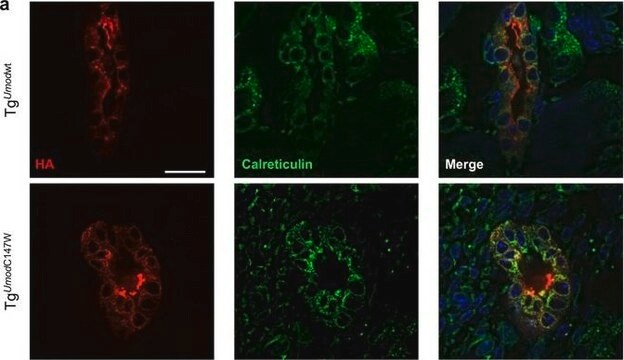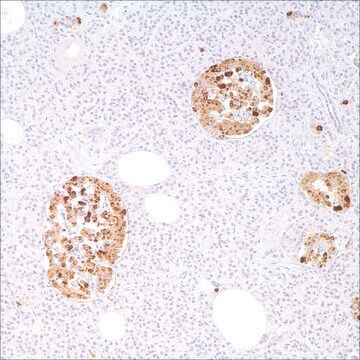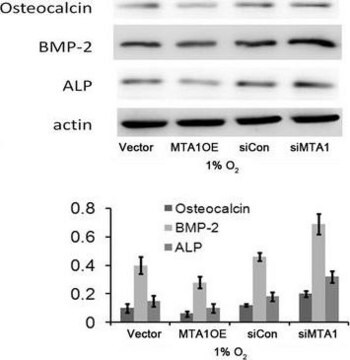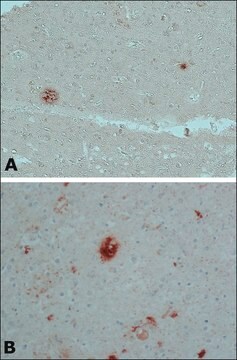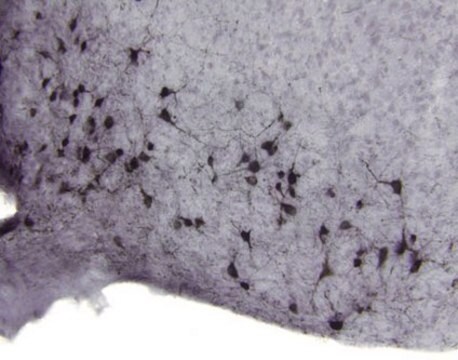MAB5268
Anti-Chromogranin A Antibody, clone LK2H10
clone LK2H10, Chemicon®, from mouse
Synonym(s):
CgA, Pituitary Secretory Protein I
About This Item
Recommended Products
biological source
mouse
Quality Level
antibody form
purified immunoglobulin
clone
LK2H10, monoclonal
species reactivity
porcine, pig, monkey, rat, human, mouse
should not react with
guinea pig, rabbit, sheep
manufacturer/tradename
Chemicon®
technique(s)
immunohistochemistry (formalin-fixed, paraffin-embedded sections): suitable
western blot: suitable
isotype
IgG1κ
NCBI accession no.
UniProt accession no.
shipped in
wet ice
target post-translational modification
unmodified
Gene Information
human ... CHGA(1113)
General description
Specificity
Application
A 1-10 μg/mL concentration of a previous lot was used in IH.
Optimal working dilutions must be determined by end user.
Packaging
Quality
Western Blot Analysis:
1:1000 dilution of this lot detected Chromogranin A on 10 μg of Mouse Pancreas lysate.
Target description
Linkage
Physical form
Analysis Note
Pancreas, adrenal gland, bowel and thyroid tissues Immunoblot: PC12 cell lysate, human pancreatic tissue
Other Notes
Legal Information
recommended
Signal Word
Danger
Hazard Statements
Precautionary Statements
Hazard Classifications
Repr. 1B
Storage Class Code
6.1D - Non-combustible acute toxic Cat.3 / toxic hazardous materials or hazardous materials causing chronic effects
WGK
nwg
Flash Point(F)
Not applicable
Flash Point(C)
Not applicable
Certificates of Analysis (COA)
Search for Certificates of Analysis (COA) by entering the products Lot/Batch Number. Lot and Batch Numbers can be found on a product’s label following the words ‘Lot’ or ‘Batch’.
Already Own This Product?
Find documentation for the products that you have recently purchased in the Document Library.
Our team of scientists has experience in all areas of research including Life Science, Material Science, Chemical Synthesis, Chromatography, Analytical and many others.
Contact Technical Service